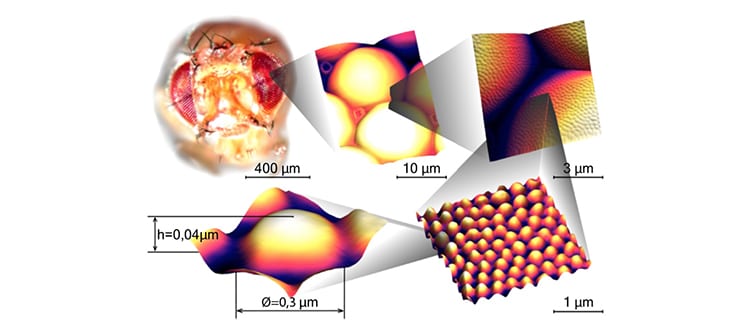Nano-coating from the University of Geneva creates nanoscale surface bumps that help to reduce reflection and adhesion.
Benefits
- Biodegradable
- Inexpensive
Applications
- Contact lenses
- Textiles
- Medical devices
- Renewable energy
UN Sustainable Development Goals Addressed
-

Goal 12: Responsible Production & Consumption
Bioutilization
- Bacteria
The Challenge
Light reflection is a common problem that occurs in many applications. For example, any light that is reflected off solar panels reduces the total amount of energy that can be used, which decreases efficiency. Additionally, when particles such as dust adhere to a surface they block potential light from entering, further reducing apparatus efficiency.
Innovation Details
The coating consists of commercial waxes mixed with the retinin , which is produced by genetically-modified bacteria. Similar to the surface of a fly’s eye, the coating creates tiny bumps that reduce reflection and dirt/dust adhesion. The coating can be used on almost any kind of surface, including wood, paper, metal and plastic. It is also resistant to washing in water for up to 20 hours. However, it can be easily damaged by detergent or scratching, and further improvements are needed to increase resiliency.
Biological Model
The outer surface of many insect eyes, the corneal lens, is covered with a regular pattern of small conical protuberances. These protuberances reduce light reflection by creating a refractive index gradient between the air-lens interface. Additionally, the protuberances create a barrier against dust particles.






